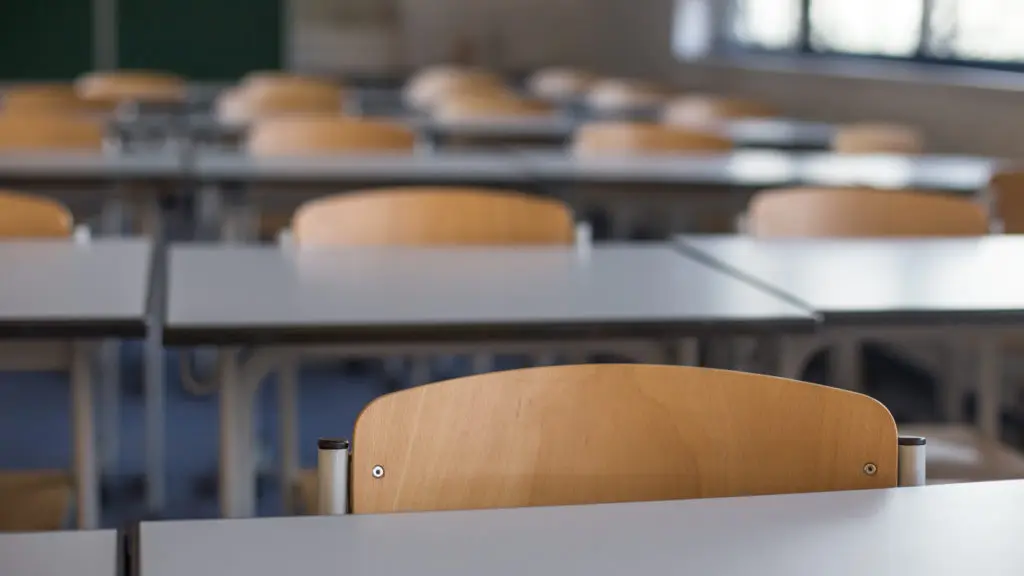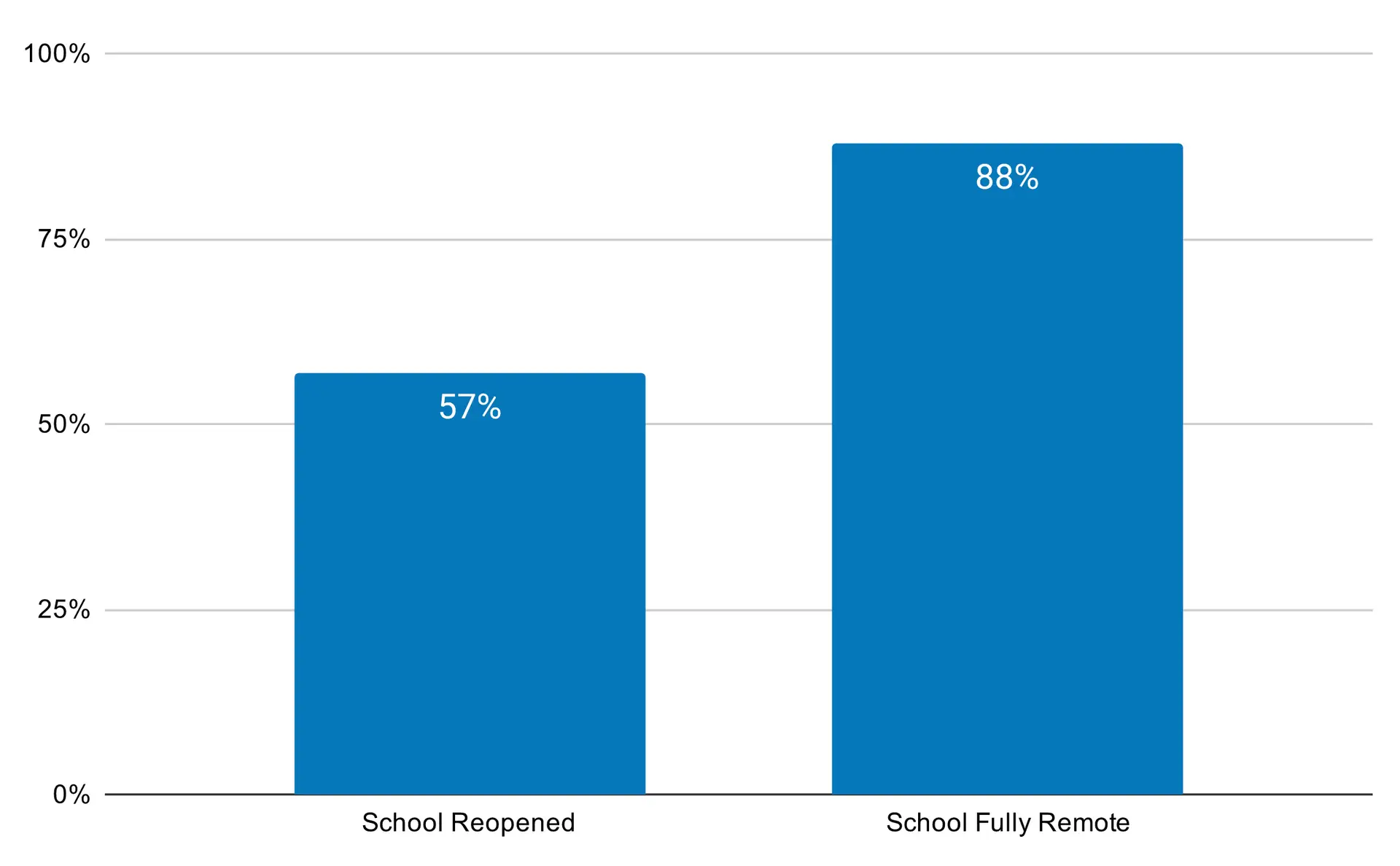After more than six months of divisive debates about the reopening of American schools, the good news is that bipartisan consensus appears near. Recent survey data show growing support for in-person learning among Democrats, likely reflecting President Biden’s endorsement. More worrying, however, is that opinion remains deeply split along racial lines.
These divisions are surprisingly large. According to the mid-February wave of the University of Southern California’s Understanding America survey, nearly 60 percent of both Black and Hispanic parents said they preferred for their children to continue learning remotely, compared to fewer than 30 percent of white parents. In New York, Chicago, and Washington, D.C., white families have opted into in-person education at much higher rates than their Black counterparts when schools partially reopened. These differences add a concerning, and uncomfortable, dimension to what was already a fraught conversation involving difficult tradeoffs. The Los Angeles teachers union recently accused California state policymakers of “propagating structural racism” in adopting the state’s school reopening plan and reopening advocates face accusations of being the latest iteration of “Nice White Parents.”
So what explains these pronounced racial differences in opinion? Anecdotal accounts from journalists suggest that parents of color are reluctant to send their kids back to school as a result of the deeply unequal toll that the pandemic has already taken in these communities. Black and Hispanic people have been infected with COVID at significantly higher rates, including in terms of severe infections resulting in hospitalization and death. They also suffer from a higher incidence of comorbidities that put them at increased risk of complications, and are more likely to live in multi-generational households. As a recent Axios report put it, “Parents’ decisions are grounded in part in the personal experiences of a pandemic that has had stark and disproportionate racial differences.”
But it turns out that the public opinion data does not support this explanation. The USC survey includes an unusually extensive set of questions related to health and personal COVID experiences and concerns—including about presence of commodities, household composition, access to health insurance, whether family members or close friends have been hospitalized or died, and subjective beliefs about the probability of a severe outcome if infected. Accounting for all of these factors leaves the racial gaps in preferences toward in-person learning almost completely unchanged, suggesting that they cannot explain why the large racial gaps in opinion exist in the first place.
The strongest predictor of whether parents are willing to send their children back turns out to be whether their own school is open. Among those whose local school is offering in-person instruction, support for remote-only learning is 50 percentage points lower than among families whose school remains fully remote. While there are a variety of plausible mechanisms that can explain this correlation, there is also clear evidence that the decisions local school districts make can move public opinion on the issue. The Understanding America survey has been asking the same panel of respondents questions about schools repeatedly since November, and the data clearly show that parent support for in-person learning jumps substantially when their local schools reopen.
We can see this most clearly by looking at parents whose child’s school was closed in November and who expressed a preference for staying remote at that time. In February, 88 percent of these parents continued to prefer keeping their child in remote-only learning if their own school remained shut—but this fell to 57 percent among families whose school had reopened in the meantime. In other words, more than 40 percent of those who had initially said they wanted to keep their child home came around when their own school ultimately reopened.
Percent of parents still preferring “remote only” option, among those who did so in November and whose own school was closed then
Note: The figure presents the percent of parents who answered “remote only” in response to the following question: “Given the state of the COVID-19 pandemic in your area and your school’s safety protocols, how would you prefer [NAME] to attend school right now?” The data are from Wave 24 of the Understanding America Study and limited to parents who answered “remote only” on Wave 18 of the same survey and also reported that their child’s school was not offering any in-person learning at the time.
Today, white school children are significantly more likely to have the option of attending school in person, and this appears to be one cause (rather than merely a consequence) of continued disagreement among racial groups about whether it is safe for kids to return. Earlier surveys showed that local school leaders are among the most trusted sources in shaping parent beliefs about COVID and school safety. When local officials announce school reopening plans, they send a strong signal that students can come back safely. Similarly, when they (or union leaders) insist that it is not yet safe to reopen schools, many parents follow their cue.
To be sure, while reopening schools should help narrow the racial differences in preferences, significant gaps will remain. Indeed, the patterns in opinions on schools largely mirror attitudes toward vaccines, with significantly higher rates of “vaccine hesitancy” in communities of color. Public health experts have warned that these disparities, if left unaddressed, will produce health inequities, and have called for efforts to increase vaccine take-up among those reluctant to receive their shots. The Ad Council recently launched a $50 million campaign to overcome vaccine skepticism.
The long-term risks and equity implications of “school hesitancy” are just as serious. For example, fall reading test scores from Ohio have shown declines in achievement that were 50 percent greater among students whose districts started the current year with fully remote instruction, as compared to students in districts with fully in-person learning, and there is little reason to believe online learning can be improved substantially before next fall. Racial gaps in student achievement were already substantial before COVID and have only grown wider since last March. It is imperative that school districts, teachers unions, and state and federal officials work together to build confidence in the safety of in-person learning so that all parents feel comfortable sending their children back to school when they have the opportunity to do so.
This piece was published as part of the Evidence Project.
Vladimir Kogan is Associate Professor in The Ohio State University’s Department of Political Science and (by courtesy) the John Glenn College of Public Affairs. The opinions in this post are those of the authors and do not necessarily represent policy positions or views of the John Glenn College of Public Affairs, the Department of Political Science, or The Ohio State University. The statistics described in this post are based on data from surveys administered by the Understanding America Study, which is maintained by the Center for Economic and Social Research (CESR) at the University of Southern California. The content of is solely the responsibility of the authors and does not necessarily represent the official views of USC or UAS.





